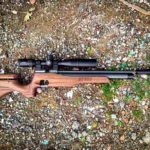Swans are often seen as symbols of grace and beauty, but can these beautiful birds kill you?
The short answer is no. But swan attacks could lead to accidental deaths. Although swans are not typically aggressive, they can and will attack humans if they feel threatened or if their nest or young are in danger.
In this post, we’ll explore the potential dangers of swans and what you can do to stay safe around these majestic creatures.
From their surprising strength to their territorial nature, we’ll take a closer look at the “dangerous beauty” of swans. So whether you’re a bird lover, a nature enthusiast, or just someone curious about these fascinating animals, read on to learn more about the potential dangers of swans and how to avoid them.
Table of Contents
Are swans dangerous?
Swans belong to the Anatidae family which also includes geese and ducks.
Swans are known to be graceful and elegant birds, but they can also be territorial and protective of their nests. While they generally do not actively seek to attack people, they may become aggressive if they feel threatened or if their young are in danger.
The swan is a giant bird and if it perceives a person as a potential threat, it may charge or chase them and even use its wings and beak to defend itself.
It is important to remember that swans are wild animals and should be respected as such. These waterfowl should not be fed by hand or approached too closely, particularly during breeding season when they are more likely to be defensive. Keep a safe distance from their nests and cygnets.
Generally, it is best to observe these beautiful creatures from a safe distance and not interfere with their natural behavior. While attacks on humans are not common, it is always best to err on the side of caution and respect the animals’ space.
Why do swans attack people?
Swans are graceful, attractive creatures that grace lakes, ponds, and other bodies of water with their presence. Despite their delicate appearance, these birds can turn aggressive when threatened or disturbed.
Nesting swans attack humans for various reasons, including territorial defense and protection of their young.
Swans such as mute swans are territorial animals, fighting tooth and nail to protect their nesting sites from any perceived threat, especially during the nesting season. These threats include humans approaching the swan too closely, especially when it is nesting or guarding its young cygnets.
When a swan perceives a human threat, it may hiss, honk violently, and even charge to frighten the human away from the swan nest or swan territory. If a person does not move quickly enough or tries to touch the cygnets, the swan may bite them to protect its brood.
Mistaken identification can sometimes lead to aggression toward humans. Swans are fiercely protective of their species, and they may confuse another bird species for one of their own, leading to assaults on people if they go too close.
The same is true for anything resembling a predator, such as dogs and other land mammals, whose movements resemble those of a coyote or fox attempting to steal eggs or prey on young birds. In these circumstances, the swan responds instinctively in defense and will attack if it feels threatened or endangered by what it considers an intruder.
Swans can also become hostile due to humans feeding them too much food near their habitat. This practice promotes overpopulation and rivalry for resources among the birds, which leads to aggressive behavior toward humans who approach them, anticipating more food.
Overfeeding the birds causes them to exhibit more defensive behavior and greater territoriality to preserve viable food sources from other birds that may compete for nutrition.
It is noteworthy that most reports of swans hurting people occur when the birds where antagonized or provoked. Additionally, swan injuries aren’t often serious and most of the time it is the bird hitting the human’s leg or arm with its wing joint.
Interestingly, the bones in swan’s wings are thinner than human bones, therefore it is more possible for the swan to hurt itself than hurting the human if it decides to attack.
What are the signs that a swan is about to attack?
A swan will display a few common warning signs when it is about to attack. It’s important to be aware of these cues so that you can take steps to protect yourself and others from a potential attack.
The first sign of an impending swan attack is aggression. A swan may become aggressive if it feels threatened or like its territory is being invaded.
The swan might start hissing, honking, and flapping its wings while rushing toward the intruder. It may also lower its head and open its beak wide to appear larger and more intimidating when facing off with an intruder.
Other signs that a swan is preparing to attack include stalking behavior and loud vocalizations. If the bird begins following someone or something for an extended period, this could indicate that it wants the person or thing out of its territory.
The same goes for loud honking or hissing coming from the bird. These vocalizations are usually meant as warnings to escape the area immediately or face the consequences.
If the warning signs have been ignored or go unnoticed by those in the vicinity of a potentially hostile swan, it may resort to physical violence to eliminate the intruder.
The show of aggression can include biting with their long necks, stomping with their webbed feet, smashing into objects (like boats), and even flying directly at people’s heads as they attempt to scare them off.
It’s important to remember that while these behaviors are often associated with aggression, they can also indicate fear in some cases.
Swans may become scared if they feel trapped or threatened by humans who don’t understand their boundaries. This means that it’s important for anyone who encounters one of these animals in the wild to pay close attention and give them plenty of space before it turns into hostility. It is also important to not approach a swan especially if it has cygnets.
It is important for adults to teach small children not to pet swans and other waterfowl at the river or lake. While most attacks don’t often result in serious injuries, but they can might their arm broken by the animal.
What to do during a swan attack?
If a swan is attacking you, it is important to try and remain calm and still. Do not run or make sudden movements, as this can agitate the attacking swan further. Slowly back away, keeping your eyes on the swan and giving it space.
Try to put something between yourself and the mute swan, such as a tree or a trash can.
If the female or male swan continues to be aggressive, seek assistance from a park ranger or other authority figure.
Can swans break human bones?
Swans have been widely thought of as dangerous animals that can break human bones. While they’re capable of aggression and defending themselves, there are no known cases of swans using their power to break a human bone.
Swans are usually more interested in pecking for food than attacking humans. These birds can and will use their strength if threatened. However, they rarely need to go beyond threatening behavior to intimidate or protect themselves from danger.
Can a swan bite your fingers off?
No, swans such as black swans may be big birds but they can’t bite your fingers off. Even though their bite force isn’t as strong as other animals, the bite from their sharp beaks can be painful.
Did a swan attack result in human death?
It’s extremely rare for a swan attack to result in human death. However, in 2012, 37 year old Anthony Hensley from Illinois drowned while trying to get to shore after being attacked by a swan.











































